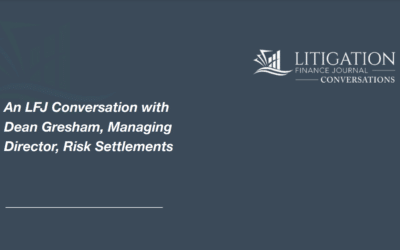In settlements in which consumers self-identify as class members, the question is not whether there will be fraud but rather the extent, nature, and cost of the fraudulent claims filed. By way of example, in a state-wide settlement on behalf of class members who purchased products, the vast majority of claims were initiated through promoter sites, and made on behalf of people who did not even live in the applicable state. In another case, there were more claims filed than units sold of the product at issue. So, the focus must be on appropriately identifying the fraud that exists. Otherwise, final approval may be at risk if the settlement is oversubscribed and the actual class members’ class benefits may be reduced pro rata because of fraudulent claims.
Participant Self-Identification: The Root Cause
In settlements involving publication notice, the court will order constitutional notice so that the identified class members are informed about their rights. With digital and print ads, the world is then invited to file a claim and obtain a cash benefit. Additionally, promotion websites that maintain massive contact lists send mass emails containing hyperlinks to claim forms and post information on how to get cash back. Some of these sites have a more subtle message while others exploit the opportunity — “if you click here, you’ll get free money.” In cases without an identifiable class, broad notice and the ability to receive a cash benefit by simply filing out a claim form, the stage is set for waste, fraud and abuse.
The COVID-19 Effect
Since the initial shutdown, consumers are spending more time online, engaging with media to a greater degree. Grocery digital coupon programs are up 57% over 2019 and enrollment in digital coupon programs across the top 30 grocery chains is up 93%. More than six in ten adults use digital coupons. Fifty-one percent of adults are using social media more, Facebook messaging has increased by 50%, and online media use has increased by over 45%.
While spending more time online than any other time in history while facing unparalleled financial hardship, consumers have found class action settlements can provide a source of money. A comparison of class action settlement take-rates from 2019 and those since the initial COVID-19 shut-down last spring illustrates this phenomenon. In 2019, only 28% of class action settlements had high take-rates. However, of the class action settlements that have occurred since early March of 2020, nearly half have experienced exceptional claim take-rates.
The following examples demonstrate the striking effect COVID-19 has had on class action settlement take-rates:
- • Two nationwide consumer products cases: Both had the same notice campaign with similar benefit amounts and settlement funds. The settlement approved in October 2020 had a 97.72% take-rate while the settlement finalized less than a year earlier, in November 2019, had a drastically lower take-rate.
- • Two state FLSA cases: The pre-Covid, 2019 case had a stronger notice campaign with a benefit of upwards of $4,500 per settlement class member; however, the post-Covid case that offered a benefit of only $250 saw three times the number of claims submitted.
- • Two nationwide FCRA cases, approved eight months apart: both had the same notice campaign with similar common settlement funds. The settlement with the $33 benefit had a take-rate of six times higher than the settlement with the $129 benefit. The only real difference between the two was that the former reached final approval post-COVID.
As outlined in the comparisons above, regardless of the amount of the benefit available, consumers are making claims under settlements at significantly higher rates since COVID-19 hit the U.S.
The Right Guardrails
What guardrails can defense counsel put in place to help ensure both that only legitimate class members receive benefits and fraudulent filers are identified or flagged?
- As part of monitoring their settlement websites, defendants should track filings linked to promoter sites and be vigilant regarding any uptick in traffic from those sites. Participants who file on these sites, not surprisingly, are less likely to be legitimate class members. A recent example involves the settlement of a case against a supplement manufacturer in which 41,000 of the 44,000 filers—93%—came directly from promoter sites.
- The court-approved claim form should use a unique member identifier which is assigned to a single mailing address and/or IP address. Therefore, if there are multiple claims from the same household address or IP address, those claims can be reviewed for potential fraud. One common scheme is to file multiple claims by the same person by slightly changing name on the claim form.
- Run claimants’ names against a database of known fraudulent filers. Those claims may be reviewed or audited.
- Review the demographics of the claimants. For example, if the settlement involves a male testosterone supplement but the claims are made by women, then those claims may warrant additional scrutiny.
- In the audit, determine if there are class members with different addresses but closely spelled names (i.e., one or two letters off). Those may warrant additional review to ensure that the claims are valid.
Awareness and Action
It is incumbent upon class action defense counsel to be aware not simply that the risk of waste, fraud and abuse is high, but also that defendants are particularly vulnerable. Counsel should integrate detection and mitigation methods into their standard procedures. If the settlement is oversubscribed due to fraud, some objectors will argue that the settlement was not fair as class members will be diluted pro rata on the benefit. This could prevent the settlement from becoming final which would adversely impact the defendant who is seeking to end litigation. Additionally, the social policy of providing a benefit to affected class members is substantially frustrated when those who have not been affected receive a windfall while adversely impacting the parties to the settlement.
If your company is facing uncertainty because of litigation and you would like to explore strategies to minimize that uncertainty, please contact us to discuss how we may be able to help.







